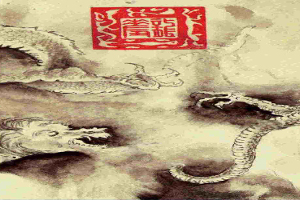Everyone seems to be talking about mindfulness meditation these days. Every few days there is another article doing the rounds and the research labs across the world seem to be occupied with nothing but research into this amazingly new method for achieving a healthy life.
The American Psychological Association (APA) has published a report setting out a huge range of benefits from mindfulness meditation including boosts to working memory, cognitive flexibility, increased focus, reduction in emotional reactivity, reduction in negativity leading to depression along with the well known benefit of stress reduction. In another APA study it was shown that mindfulness meditation reduced emotional exhaustion and improved work place satisfaction.
While studies at John Hopkins University published in JAMA Internal Medicine, showed mindfulness meditation had positive effects on reducing anxiety, reducing the effects of pain and in managing depression. It also seems to have a profound effect on the activity in our pre-frontal cortex, the part of the brain where we do all our planning and abstract thinking according to the University of Berkeley where they have been conducting research into mindfulness meditation.
In another study, after just one day of mindfulness meditation the control group in this study at University of Wisconsin showed a marked response. Interestingly this was a response at a genetic level. The particular genes effected are related to the way the body controls inflammation and the suggestion is that mindfulness meditation can have an almost immediate effect on inflammatory disorders. Although the study doesn’t look at long term effects of mindfulness meditation there is clearly hope that such a study would return some positive results.
Amishi Jha, a psychologist working with the United States Marines use mindfulness meditation techniques to improve mental resilience and found that getting as little as 12 minutes of meditation practice a day helped the Marines to focus their attention and grow their working memory. At the University of Oregon researchers have used M.R.I. scanners to show that after only eleven hours over two weeks those practicing meditation techniques improved the efficiency of the brains white matter. The region of particular importance for rational decision-making and effortful problem-solving.
I could go on and the list of studies and the benefits of mindfulness meditation are endlessly expanding. The research is continuing to grow so I think we can expect to see more and more evidence to support the practice of mindfulness meditation. It may even get to the stage where it is being taught in schools as there already studies that show it has a beneficial effect not just on our physical and cognitive abilities as adults but also on the behaviour of young people in school.
So what is mindfulness meditation?
Well it seems that the term mindfulness has been adopted by modern psychology as a therapeutic technique and much of the research cited above relates to this field of enquiry. Mindfulness in the field of psychology refers to quality of awareness in which your focus on the moment by moment here and now is brought to your attention. The various definitions available talk about a non-judgemental, purposeful paying attention. In which thoughts and feelings are acknowledged and accepted without criticism. This is not just a case of experiencing the moment to its fullest possibility but also about being open to experience in a spirit of curiosity and acceptance.
It is thought that you can train for this state of mind, that it is something that can be acquired through meditation practices that quiet the mind and focus attention. Through meditation the aim is to eventually be able to bring this way of being into everyday life. To be able to experience the world in this mindful state of being. The ability to shift attention away from the constant babble of the mind or away from strong emotions can teach you that there is more to being than just your thoughts and feelings. That these can be looked at objectively rather than reacted to subjectively. It helps break habitual patterns of behaviour and, over time, allows you to respond in different ways to stimulus from the world, your mind and your feelings.
Actually this is not a new idea and the modern take on the term mindfulness has largely emerged from the teachings of Buddhism. Though it is worth noting that mindfulness is not a religious practice but just one of many techniques that Buddhists use as part of their journey of inner cultivation. The cultivation of ‘correct-mindedness’ is one of the elements of the noble eight fold paths. For Buddhists mindfulness is an attentive awareness of the reality of things. It is the calm awareness of the moment to moment feelings of your body, emotions and mind. However the translation from the root sanskrit word smṛti is not one hundred percent correct. As well as meaning awareness the word is also related to ideas around remembering and although it concerns attention it also means non-forgetfulness.
First translated in 1981 from the Pali-language the other important root word for this concept, sati was taken from part of the longer phrase sammā-sati which we are told means right mindfulness. Which we should understand to refer to the activity of constant presence of mind. It is said that when practicing mindfulness, for example by following your breathing, the attention is focused and whenever the mind wanders, it is brought back to the breath. So there is a sense here of remembering to be aware, of brining the focus back to that which you are attending to. However there are those scholars who say that even this understanding of the meaning of smṛti (Sanskrit) or sati (Pali) is incorrect and that the primary meaning of the word is recollection. In some contexts it means that which is remembered and can refer to rhythmic chanting of texts. So, to recollect or remember the texts through chanting is yet another way of understanding the idea of mindfulness.
In Chinese the word smṛti (स्मृति) corresponds to the niàn (念) which means to study or read aloud, which would support the use of the word as an activity performed rather than just a state of mind. However in combination with other Chinese characters it can mean niàntou (念头) which translates as thought, idea, intention. Or in other instances, for example niànjīng (念经) it can mean chant or recite sutras. This supports the notion that within Buddhism mindfulness is a system of interconnected practices rather that just one technique. The character niàn (念) is made up of several components: jīn(今) now, this; and xīn (心) heart, mind. Noted sinologist and linguist Bernhard Karlgren develops this etymologically by breaking it down graphically looking at the component parts of the characters: to study, learn by heart, remember; recite, read (–); to have (今); to present to (心 ) the mind. This gives us: to reflect, or to think on what we have learnt. So clearly, even in Chinese there is more to the original meaning than just the simple idea of mindfulness that has been appropriated by modern western psychology. There is, it seems, a tradition of practices that are integrated into a philosophical system the aim of which is to gain a state of mindfulness. A state that has remembering as one element of the practice.
In fact there are techniques for remembering or reminding oneself of mindfulness that aim to make this state of mind continuous. For example, by focussing on specific environmental cues they can help you to remember to bring your attention back to the state of mindfulness. So, you might decide that when ever you see a red traffic light you will take three breaths and bring your attention back to that mindful state. It is this repetition, or bringing back to, or of recollecting that is important. It’s not just about being in mindful state of mind during a few brief minutes of meditation. Using environmental cues, learning to read aloud scriptures, remembering texts, chanting or even signing can help us develop the kind of skill needed to bring our attention back to a state of mindfulness.
In early Buddhist texts there are references to ten forms of mindfulness though the most detailed and elaborated teachings are on the mindfulness of breathing. In these the instructions simply advise you to find a comfortable place to sit and there watch the breathing carefully. To notice the breath and focus on the feeling while quietening the mind. It can be practised seated, prone or walking and the outward exhalations can be counted in order to help focus the attention. When the mind becomes distracted you should simply return the attention to the breath and without emotion continue with the practice. It is useful to set a goal, say a duration or even a focus for your thought, perhaps on the feeling of the breath entering through your nose and being drawn down to your belly.
The Chinese Buddhist tradition includes a number of well read texts on the subject many of which were written by Zhiyi, the founder of Tiantai Buddhism in China. The Six Subtle Dharma Gates (六妙法門 Liù Miào Fǎmén) is perhaps the most widely read and here Zhiyi classifies breathing into four main categories: panting (喘 chuǎn), unhurried breathing (風 fēng), deep and quiet breathing (氣 qì), and stillness or rest (息 xi). The aim of meditation is to achieve the last and to come to form of stillness where the breathing is so slow and subtle as to be undetectable. Written around 538–597 CE the Six Subtle Dharma Gates details a set of simple techniques to deepen meditation (you can read a copy here). The methods are sequential and start with counting the breaths but eventually encourage you to let go of even this and just focus your attention on the breath alone.
How does tai chi or qigong relate to mindfulness?
Mindfulness mediation as been largely popularised in the western world by Dr. Jon Kabat-Zinn who drew his ideas mainly from his experiences of studying Zen Buddhism. A branch of Buddhism that emerged in 7th century China as an amalgam of Buddhism and Taoism. There has of course been a widespread overlap between these two great historical traditions in China though perhaps Zen is the most obvious incarnation of this melding of philosophies. It is worth noting here that though some believe that Daoist meditation techniques come directly from the Buddhist tradition there are earlier references to meditation techniques in the classic literature. For example the Dào dé jīng (道德經), attributed to the scholar/sage Laozi and written around the 6th century BCE is thought to include passages on meditation techniques. Verse 10 in the text exhorts you to breath like a baby and this is a common theme in Daoist descriptions of meditation practices.
There are other early references to meditation from the 3rd century BCE through to the modern period. For example the Zhungzi talks about ‘sloughing of limbs and trunk, dimming of intelligence and sitting and forgetting‘. The later Baopuzi in the 4th century CE talks of shouyi mediation as a technique for achieving the the original unity and primordial oneness of all. During the Tang dynasty (618–907 CE) mediation practices included a variety of concentration exercises as well as visualisations of internal body energies and contemplation of the world. During later dynasties these techniques morphed into what we now refer to as nèidān (內丹) or inner alchemy. In which the body becomes a cauldron for cultivating energy, breath and spirit for the purposes of improving physical, mental and emotional health, as well as for the promotion of longevity.
It is said that there are three steps to take if you wish to follow the Daoist path towards mindfulness. First is to become still and empty your mind of thoughts and feelings. Let go of your judgements and theories and just quieten the mind. The second step is to cease interference with the world. Finally to avoid becoming entangled in the world. The maxim seems to be – don’t try and control the world try and flow with the world. It is this idea of flow that perhaps distinguishes Daoist approaches to mindfulness from Buddhist notions. Though both exemplify the opening up and accepting of the world as is in a non-judgemental way. Both seek to find harmony in nature and seek to remove the distinction between self and the world. In Daoism it seems, that this idea of flow is most strongly inflected. In this tradition mindfulness is a way oof tuning into this flow in order to be in harmony with lived experience.
This is the same kind of flow that you should feel when you practice tai chi chuan (太極拳 tàijí quán) or chi kung (气功qìgōng) with mindfulness. A focus on smoothness of the breath, coordinating breath with the movement, slow and continuous, awareness of the whole body not one part, stillness but in movement. The harmonising of the parts of the body, hands with feet, elbows with knees, shoulders with hips. The harmonisation of your spirit or “emotional mind” (心 xīn) with your intention (意 yì). Your intention harmonises with your breath and physical momentum (氣qì). Your breath and physical momentum harmonise with your physical strength (力lì). As you move between yīn (阴) and yáng (阳) feeling the weight shift, the direction change or the with expression of one kind of energy or another. This should be done with a still mind, focused and attentive to the feeling inside, awareness of the breath and movement as a whole body experience. This is also a form of mindfulness meditation just as much as sitting still and counting the breath. It is also, some might say, more fun and more fruitful in the long run.
There is perhaps an even earlier reference to meditation practices that predates even the Dào dé jīng. Found on a block of jade estimated to date earlier than 400 BCE the inscription says xíngqì (行氣 circulating qi) and is perhaps the earliest known reference to breath meditation in China. The inscription says:
To circulate the Vital Breath:
Breathe deeply, then it will collect.
When it is collected, it will expand.
When it expands, it will descend.
When it descends, it will become stable.
When it is stable, it will be regular.
When it is regular, it will sprout.
When it sprouts, it will grow.
When it grows, it will recede.
When it recedes, it will become heavenly.
The dynamism of Heaven is revealed in the ascending;
The dynamism of Earth is revealed in the descending.
Follow this and you will live; oppose it and you will die. (tr. Roth 1997:298)
It would seem then, that when it comes to mindfulness meditation, the modern world is just rediscovering techniques that are possibly over two and a half thousand years old. So no surprises that through mindfulness meditation we are able to improve our mental, emotional and physical health. If we practice these techniques we can achieve longevity and tune into the flow of nature. It is simply a matter of breathing. Something we can all do, nothing complicated about it. We just need to do it for twelve minutes a day, every day.
Originally published on IMOS in February 2014.








 China Tai Chi Guide
China Tai Chi Guide Five Elements Academy
Five Elements Academy Long Tou Shan Tai Chi School
Long Tou Shan Tai Chi School Seven Stars Internal Arts
Seven Stars Internal Arts Traditional Tai Chi School
Traditional Tai Chi School Wandering Dao, China
Wandering Dao, China




